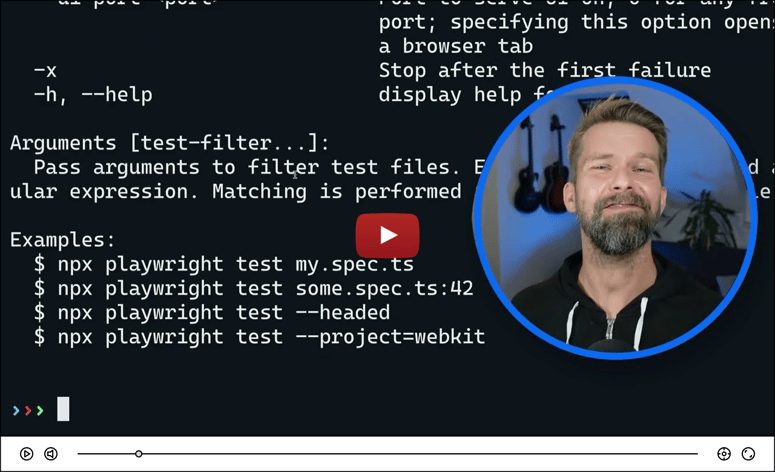TL;DR:
- Research suggests vibe coding, using AI for code generation, has notable issues like logical errors, performance bottlenecks, and security vulnerabilities.
- It seems likely that these problems, especially security risks, are worsening with increased adoption, as developers report real-world examples.
- The evidence leans toward developers taking steps like creating checklists to mitigate these issues, but challenges remain, particularly in larger projects.
TL;DR: a little longer
Vibe coding, a trend where developers use AI tools to generate most of their code, is popular for its speed and creativity, especially in game development. However, it comes with significant challenges, particularly around vulnerabilities from AI coding tools. This analysis, based on X posts, highlights the main problems, pain-points, and complaints, offering a clear picture for those interested in this trend.
Problems and Pain-Points
Vibe coding often leads to logical errors that developers might miss, as they didn’t write the code themselves. Performance can suffer too, with AI prioritizing correctness over efficiency, leading to slower applications. The biggest concern is security: AI doesn’t think like hackers, potentially leaving apps open to attacks. Developers also note code bloat and maintenance difficulties, especially in larger projects, where AI might fake implementations or create unnecessary code.
Customer Complaints and Community Response
On X, developers express frustration with these issues, sharing experiences of bloated apps and security breaches. Some, like Ian Nuttall, are creating checklists to keep apps lean and secure, showing a proactive approach. Others, like Denis Avguštin, highlight real cases where security fixes were needed after exposure, indicating growing industry concern.
Unexpected Detail: Industry Workshops
An interesting find is security companies like Snyk offering workshops on uncovering vulnerabilities in AI-assisted coding, suggesting a broader industry effort to address these risks (Snyk Security Workshop).
Comprehensive Analysis of Vibe Coding Trends on X
This detailed analysis, based exclusively on X posts, aims to deeply understand the problems, pain-points, and customer complaints related to the vibe coding trend, with a focus on vulnerabilities generated by AI coding tools. The findings are derived from discussions, complaints, and insights shared by developers and industry observers on the platform, providing a comprehensive view for stakeholders in software development.
Defining Vibe Coding
Vibe coding emerges as a trend where developers leverage AI tools to generate a significant portion of their code, often driven by natural language prompts or intuitive "vibes" rather than traditional coding practices. This is particularly evident in creative domains like game development, as seen in X posts about the "2025 Vibe Coding Game Jam," where participants were required to use AI for at least 80% of their code (Vibe Coding Game Jam). For instance, posts highlight projects like GTA-style multiplayer games built entirely with AI, showcasing the trend's creative potential.
Identified Problems and Pain-Points
The analysis reveals several critical issues associated with vibe coding, particularly concerning code quality and security:
Logical Errors: AI-generated code often contains logical errors that developers may not notice, as they did not write the logic themselves. This is a recurring complaint, with Kaushal Tripati noting, "AI generated code has issues... logical errors you don’t notice because you didn’t write the logic yourself" (Logical Errors in AI Code). This can lead to bugs that are hard to identify and fix, especially in complex projects.
Performance Bottlenecks: AI tools tend to optimize for correctness rather than efficiency, resulting in performance issues. Kaushal Tripati further explained, "performance bottlenecks since AI optimizes for correctness, not efficiency," which can make applications slower and less scalable compared to human-written code (Performance Issues).
Security Vulnerabilities: A major concern is the security risks introduced by AI-generated code. AI does not think adversarially, meaning it may not anticipate potential security threats that hackers could exploit. Kaushal Tripati highlighted, "security risks AI doesn’t think adversarially, but hackers do," underscoring a critical vulnerability (Security Risks). Denis Avguštin echoed this, stating, "Software security is a huge problem and it's getting worse with 'vibe coding' and ai generated code," and referenced a case where someone had to fix issues across products after exposure (Worsening Security).
Code Bloat and Maintainability Issues: Vibe coding can lead to bloated applications with unnecessary code, even for developers with coding knowledge. Ian Nuttall warned, "if you're vibe coding and don't know code (and even if you do) your app can get bloated and have security issues," highlighting the risk of over-reliance on AI (Code Bloat). Jo Bergum added, "My experience with vibe coding is that it's fantastic for MVP but more frustrating for rewrites in larger code bases. When Claude starts to fake implementations to make tests pass, or solve dependency issues by implementing a mock, it feels like there is still a few more months," pointing to maintainability challenges (Maintainability Frustrations).
Customer Complaints and Community Sentiment
Developers on X express significant frustration with these issues, often sharing personal experiences and seeking solutions. Ian Nuttall, for example, has been proactive, stating, "i got claude to write a checklist of items i can add to cursor as context to help vibe apps stay lean and secure," and encouraging others to "get some cursor rules in place (see attached post) to cover best practice security" (Proactive Measures). This reflects a community effort to mitigate risks, with others like Mehdi Saadat suggesting alternative terminology like "Synth Coding" to better describe the practice (Terminology Debate).
Complaints also include warnings about "raw dogging" AI tools, with TJ noting, "Raw dogging claude will cause headaches in the future," indicating the dangers of using AI without oversight (Oversight Warning). Real-world impacts are evident, with Denis Avguštin referencing a case where "Marc had a similar situation, but he stepped back and fixed all the issues across his products in a matter of days. He wouldn't have done it if he wasn't exposed," highlighting the exposure-driven need for fixes (Real-World Impact).
Community Response and Mitigation Strategies
The X community is responding with various strategies to address these challenges. Ian Nuttall’s efforts include creating custom modes and playbooks, such as at playbooks.com, to help coders, no-coders, and vibe coders build securely. He also shared, "did you know cline is open source and you can read their system prompt? worth checking out to see how tools like cursor are built and test for your own stuff," encouraging learning from existing tools (Open Source Learning). These efforts aim to keep applications lean and secure, with a focus on modular, composable rules.
Industry Recognition and Unexpected Findings
An unexpected finding is the industry’s response, with security companies like Snyk offering workshops to address vulnerabilities, as seen in their post, "Join Snyk's free Live Hack Workshop on April 3. Build a demo app with #AI-assisted coding tools, uncover vulnerabilities, and earn CPE credits!" (Snyk Workshop). This indicates a broader industry effort to tackle the growing security concerns, which may not be immediately apparent to individual developers but is crucial for long-term adoption.
Summary Table: Key Issues and Examples
| Issue | Description | Example from X |
|---|---|---|
| Logical Errors | Hard to detect errors in AI-generated logic | "logical errors you don’t notice because you didn’t write the logic yourself" (Kaushal Tripati) |
| Performance Bottlenecks | AI prioritizes correctness over efficiency | "performance bottlenecks since AI optimizes for correctness, not efficiency" (Kaushal Tripati) |
| Security Vulnerabilities | AI doesn’t think adversarially, risking attacks | "security risks AI doesn’t think adversarially, but hackers do" (Kaushal Tripati) |
| Code Bloat | Bloated apps with unnecessary code | "your app can get bloated and have security issues" (Ian Nuttall) |
| Maintainability Challenges | Difficult to rewrite in larger codebases | "frustrating for rewrites in larger code bases. When Claude starts to fake implementations" (Jo Bergum) |
This table encapsulates the core issues, providing a quick reference for stakeholders to understand the landscape.
Conclusion
The vibe coding trend, while innovative, introduces significant problems and pain-points, particularly around vulnerabilities from AI coding tools. Logical errors, performance bottlenecks, security risks, code bloat, and maintainability challenges are prevalent, with developers actively seeking solutions through checklists and best practices. Real-world examples of security breaches underscore the urgency, while industry responses like workshops suggest a growing effort to address these issues. This analysis, based on X posts, offers a comprehensive view for developers and stakeholders to navigate the trend responsibly.
Key Citations
- Vibe Coding Game Jam organized by levelsio
- Logical Errors and Security Risks in AI Code by Kaushal Tripati
- Worsening Security with Vibe Coding by Denis Avguštin
- Code Bloat and Security Issues by Ian Nuttall
- Maintainability Frustrations with Vibe Coding by Jo Bergum
- Snyk Security Workshop on AI Coding Vulnerabilities
- Proactive Measures for Secure Vibe Coding by Ian Nuttall
- Oversight Warning for AI Tools by TJ
- Playbooks for Vibe Coding Tutorials by Ian Nuttall
- Open Source Learning for AI Coding Tools by Ian Nuttall





Top comments (0)